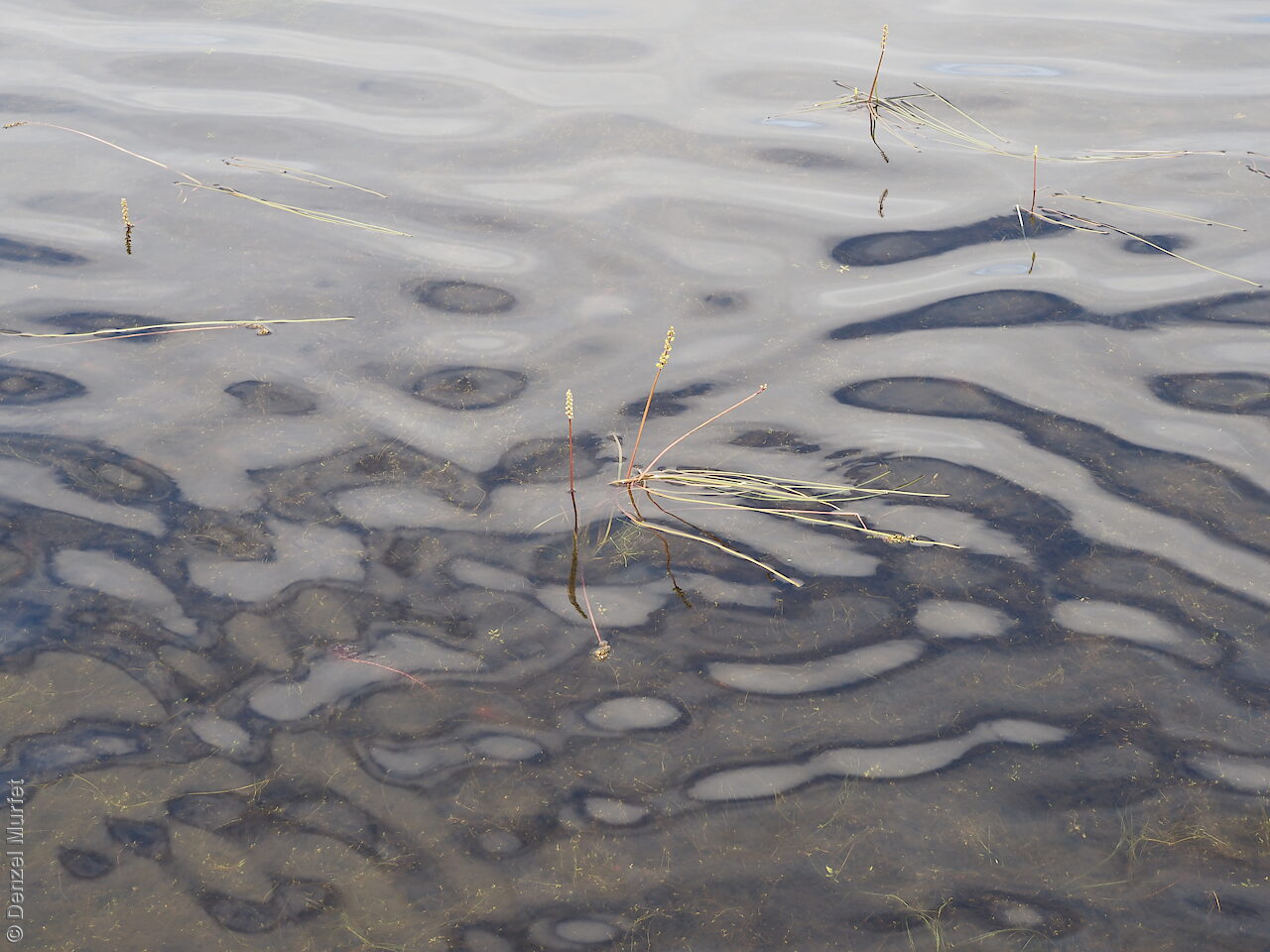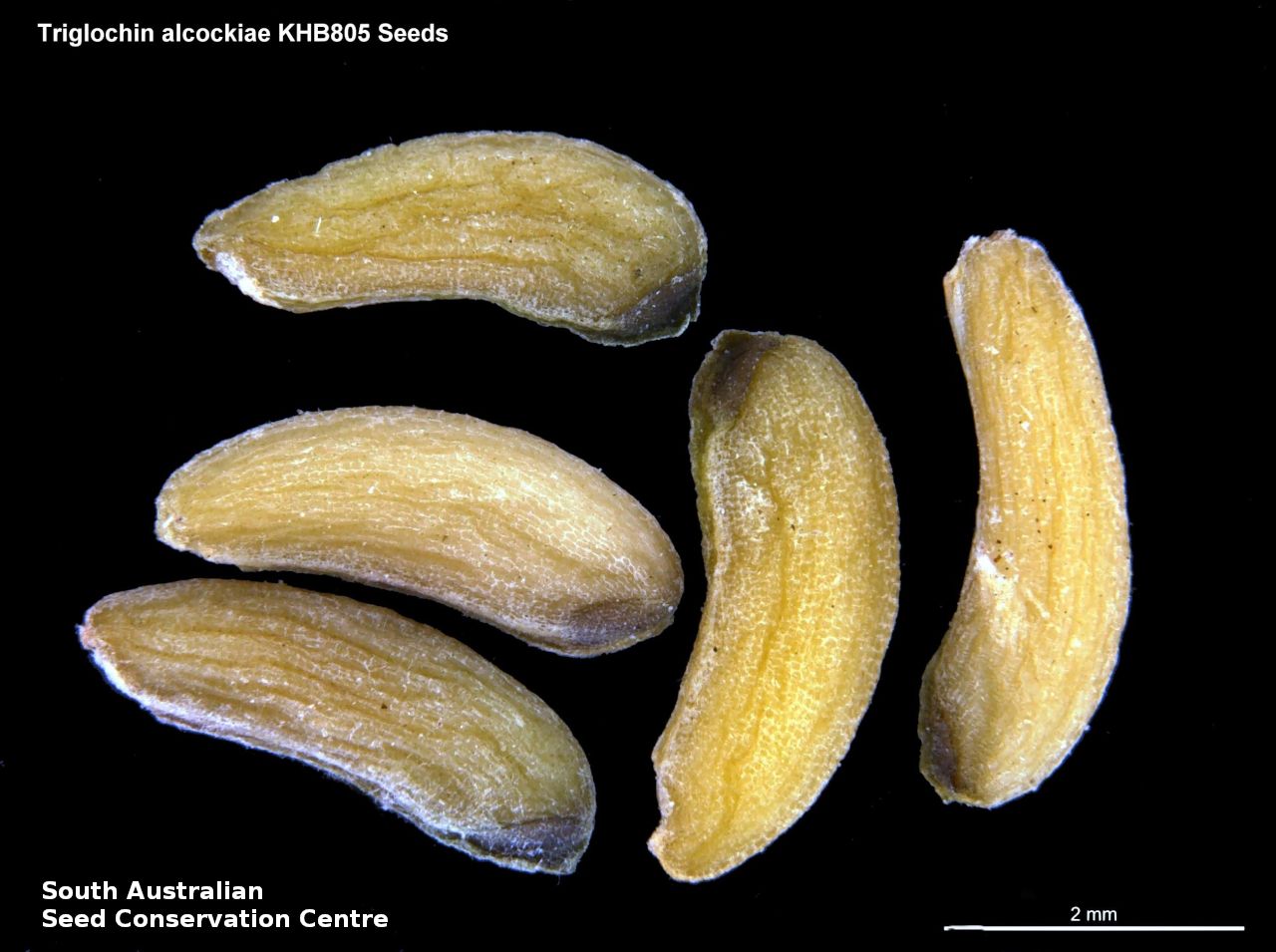














Botanical art
Prior names
Triglochin alcockiae
Triglochin procerum, orth.var., partly
Triglochin procera, partly
Triglochin procerum, orth.var., partly
Common names
Alcock's Water-ribbons
Etymology
Cycnogeton (formerly Triglochin), from the Greek 'cycnos' meaning swan and 'geiton' meaning neighbour, referring to its closeness, taxonomically to Triglochin. Alcockiae named after Kath Alcock of Naracoorte, South Australia, who has had a strong interest in the plants of her area over many years and was the first to alert Botanists to the existence of this species.
Distribution and status
Found on Kangaroo Island, southern Mount Lofty Ranges and the South-east in South Australia growing in fresh, still, clear water to 50 cm deep in ephemeral swamps, pools and flats. Also found in Victoria and Tasmania. Native. Rare in South Australia. Uncommon in Victoria. Common in Tasmania.
Herbarium regions: Southern Lofty, Kangaroo Island, South Eastern, Green Adelaide
AVH map: SA distribution map (external link)
Plant description
Emergent, perennial, aquatic herb with thick, woody, fibre-covered rhizomes and roots ending in tubers which are small, plump, to 28 mm long and 12 mm diameter; plants never robust. Leaves slender, emerged portions floating, never erect to 90 cm long and 8 mm wide. Inflorescence a slender spike to 67 cm long with a short fruiting part at the tip. Flowering between September and December. Fruits are yellow-green. tinged purple globular to depressed globular fruit; mature fruits to 8.7 mm long and 9.9 mm wide with 1–67 per spike. Seed segments (carpels) attached along only the lower part, with the seed-free upper portion sometimes partially spiralled. Seeds are yellow-green segmented seed (carpel) to 8 mm long and 5 mm wide with broad-convex dorsal and lateral ridges. Seed embryo type is linear.
Seed collection and propagation
Collect seeds between October and January. Collect mature fruits that are turning yellowish-green and seed segments come apart easily, either individually or by breaking off the spike. Place the fruit in a tray and leave to dry for 1 to 2 weeks. No further cleaning is required collection consist of mainly individual seeds. If collected with other material, then rub the dried fruit with a rubber bung to dislodge the seeds. Use a sieve to separate any unwanted material. Store the seeds with a desiccant such as dried silica beads or dry rice, in an air tight container in a cool and dry place. From two collections, the seed viability was average to high, ranging from 60% to 100%.
| Location | No. of seeds (weight grams) | Number of plants | Date collected | Collection number Collection location | Date stored | % Viability | Storage temperature |
|---|---|---|---|---|---|---|---|
| BGA MSB | 2,900 (14.67 g) 2,900 (14.67 g) | 30+ | 1-Dec-2005 | DJD272 South Eastern | 1-Aug-2006 | 100% | +5°C, -18°C |
| BGA | 1,500 (26 g) | 100+ | 3-Nov-2013 | KHB805 South Eastern | 24-Mar-2015 | 60% | -18°C |
Number of plants: This is the number of plants from which the seeds were collected.
Collection location: The Herbarium of South Australia's region name.
% Viability: Percentage of filled healthy seeds determined by a cut test or x-ray.